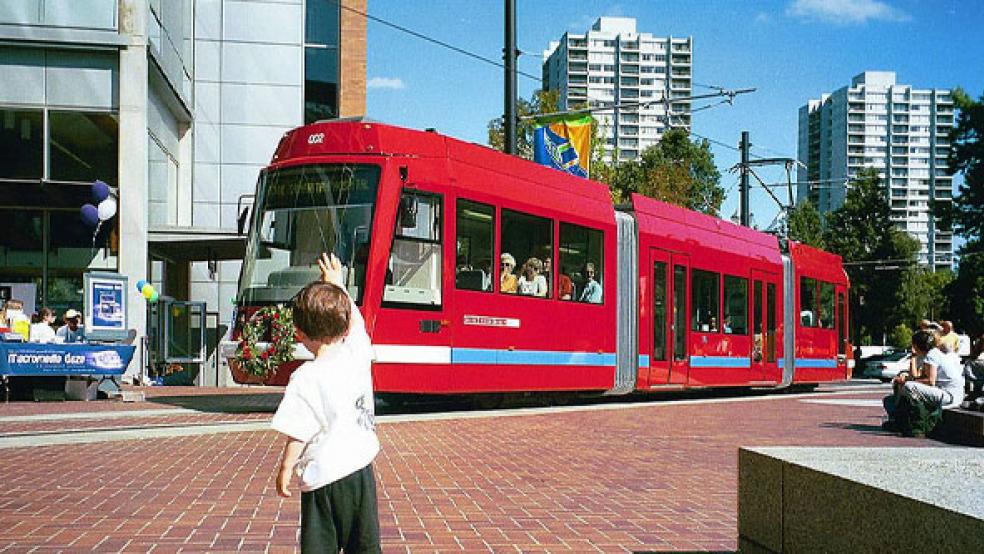The city of Atlanta won a federal grant to help create a streetcar on rails that will connect the historic Sweet Auburn neighborhood with the tourist center of Centennial Olympic Park. Though it is only 2.62 miles long, backers say it will make downtown Atlanta a more vibrant place. But will it be worth all that taxpayer money?
Total cost: $72 million
Source of funding: This project was the biggest winner in last year’s distribution of TIGER II stimulus grants from the U.S. Department of Transportation, receiving $47.6 million. Over the next 20 years, the remainder is supposed to come from the city of Atlanta, a share of the 3 to 8 percent hotel and motel tax that Georgia’s guests pay and funds raised by the Atlanta Downtown Improvement District.
Jobs created: Building the initial phase next year will create 930 construction jobs, with about 5,000 more over the next 20 years in the transit-oriented villages that will cluster at both ends of the line, in the estimation of Mayor Kasim Reed’s office. Operating and repairing the system when its running will require more public wage-earners. But these optimistic figures have been questioned by the nonpartisan group Politifact, which points out that the mayor is using a generous definition of “job.” That figure includes those who will manufacture the base material used for the construction, probably from outside Atlanta, as well as those who supply the goods that workers will buy with their wages. The actual number of employees who will operate the streetcar back-and-forth is 23 positions over twenty years, and not 460 as the mayor’s office indicated, according to Politifact.
Costs versus benefit: The fares will be subsidized, although the final fare price has not been set, but the city maintains there are additional benefits to creating the construction jobs, as well as those service businesses that are expected to cluster around the street car terminals — node-centered growth that urban planners like to call transit-oriented development. “It’s going to put people to work,” said mayor’s spokesman, Reece McCranie. “We see this will primarily serve as a way for tourists to get around.” The line is a diameter link that connects two ends of the Atlanta Belt Line, a circular system of parks that rings the city center. There is no expected benefit for reducing Atlanta’s snarled traffic. An original plan to run it up the congested main drag of Peachtree Street was rejected by federal officials because of the estimated $298 million price tag, reported the Atlanta Journal-Constitution.
Political difficulties: City council funding is not yet assured, and critics complain the streetcar line is too short and will create even more downtown traffic. “It is nothing more than a Disneyland toy,” complains Randal O’Toole, a frequent critic of city rail projects and a fellow at the libertarian Cato Institute. “Transit riders aren’t enough to generate economic development.” He dismisses the idea that the spending is a long-term strategy for job creation. “If you want jobs, you can dig holes and fill them up but it would be best not to do it in the middle of the street. If you want lasting economic value, you have to give people something they need.” O’Toole also predicted the costs of maintenance would eventually take away revenues from Atlanta’s cash-strapped MARTA system of subways and buses and hurt the service of Atlanta’s existing transportation network.
Related Links:
Infrastructure Alert: Another Bridge is Falling Down (The Fiscal Times)
Capital Makeover: Stimulus Fuels D.C. Construction (The Fiscal Times)
Will infrastructure stimulus create jobs? (CNN)


